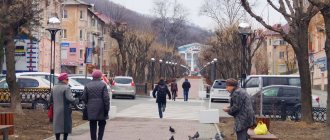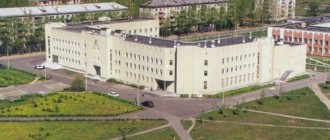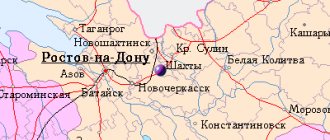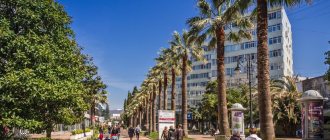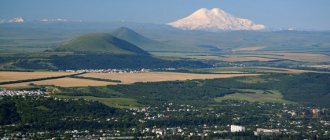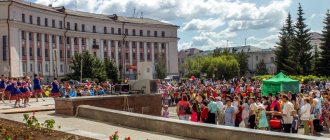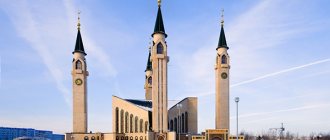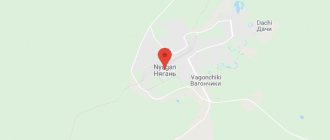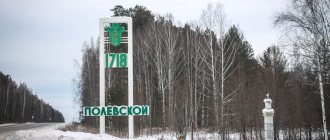Historical facts of Kiselevsk
- The city stands on the site of the villages of Afonino, Kiselevka and Cherkasovo, which were formed in 1770 by settlers from the central part of Russia.
- The impetus for the development of the city was given by coal mining for the needs of the Tomsk Ironworks, which began in the village of Afonino in 1850.
- In 1917, the development of the Kiselevsky mine began, which later became part of Sibugol.
- In 1921, railway tracks from the Kolchugino-Usyaty branch were connected to the Kiselyovsky mine.
- In 1936, the mining workers' settlement was given the status of a city. This date is celebrated as the city's birthday.
- According to statistics, in 2021, 90.9 thousand people lived in the city.
Administrative structure
The urban district “City of Kiselevsk” includes 7 settlements:
- Alexandrovka village
- With. Verkh-Chumysh
- Uskat village
- Oktyabrinka village
- p. Karagaylinsky
- Kiselevsk
- Berezovka village
The population of the urban district is 109,092 people, of which 103,948 are urban, 5,144 are rural.
Kiselevsk has a complex layout, historically formed according to the “Mine - village” principle, and consists of 8 separate territorial districts: Shoe Factory, Red Stone, Afonino, Central (City), Green Kazanka (12th mine), Cherkasov Kamen, Karagayla, Uskat (). Housing was built mainly in the 1950s and 1960s.
Kiselevsk on the map of Russia, geography, nature and climate
The city is located in the upper reaches of the Aba River, in the foothills of the Salair Ridge. The city of Prokopyevsk is 19 km south of Kiselevsk, Novokuznetsk is 58 km southeast, Kemerovo is 178 km north. City center coordinates 54°00′ N. and 86°38′ E. The area occupied by Kiselevsky is 120 sq. km.
The climate in the city is continental with long frosty winters and short cool summers. The hottest month is July. Its average daily temperature is +18.4°C. The coldest month is January. The average temperature during this period in the city is -15.8°C.
Kiselevsk
(Kemerovo region)
OKATO code:
32416
Founded:
1917
Urban settlement since:
1932
City since:
1936 City of regional subordination
Telephone code (reference phone)
| 38464***** | 65-5-55 |
Deviation from Moscow time, hours:
4
Geographical latitude:
54°00′
Geographical longitude:
86°38′
Altitude above sea level, meters:
320 Sunrise and sunset times in the city of Kiselevsk
Routes on the map of Kiselevsk. Transport infrastructure
There is a railway station in Kiselevsk. The Leninsk-Kuznetsky - Novokuznetsk highway passes through the city. You can use it to get to the roads leading to the following cities:
- Barnaul (371 km);
- Biysk (306 km);
- Tashtagol (211 km);
- Novosibirsk (326 km);
- Kemerovo (178 km);
- Tomsk (382 km);
- Krasnoyarsk (705 km).
By rail, trains pass through Kiselevsk in the direction of: Moscow, St. Petersburg, Kislovodsk, Adler, Anapa, Vladivostok, Novosibirsk, Bishkek, etc. Public transport in the city is represented by buses and minibuses. From the city bus station there are regular flights to the following cities:
- Prokopyevsk;
- Kemerovo;
- Belovo;
- Novokuznetsk;
- Tomsk and others.
Map of the city of Kiselevsk. Kiselevsk Yandex maps
Created using the Yandex service People's Map (Yandex map), when zoomed out you can understand the location of Kiselevsk on the map of Russia. Kiselevsk Yandex maps. Interactive Yandex map of the city of Kiselevsk with street names, as well as house numbers. The map has all the symbols of Kiselevsk, it is convenient and not difficult to use.
On the page you can read some descriptions of Kiselevsk. You can also see the location of the city of Kiselevsk on the Yandex map. Detailed with descriptions and labels of all city objects.
Share information with friends:
The main attractions of the city of Kiselevsk
In the city of Kiselevsk, a large number of monuments dedicated to the Second World War, miners and Bolsheviks have been preserved. Among the main attractions:
- Museum of Local History . The main exhibition is dedicated to the history of the city. The most interesting exhibits of the museum are the collection of bells and bells.
- Church of Saints Peter and Paul. The oldest building in the city made of wood.
- Sports complex "Shakhtar" . The facility was built in 2006. The modern complex hosts sporting events and other events significant for the city.
- Temple in honor of the icon of the Mother of God “Quick to Hear” . The church was built according to the design of V.N. Usoltsev and opened in 2001.
- Church of the Holy Blessed Prince Alexander Nevsky . The temple was built with donations from local residents and businesses. The construction dates back to 2006.
You can find the location of city attractions on a map of Kiselevsk with houses.
Population of Kiselevsk for 2021 and 2021. Number of residents of Kiselevsk
Data on the number of city residents are taken from the Federal State Statistics Service. The official website of the Rosstat service is www.gks.ru. The data was also taken from the unified interdepartmental information and statistical system, the official website of EMISS www.fedstat.ru. The website publishes data on the number of residents of Kiselevsk. The table shows the distribution of the number of residents of Kiselevsk by year; the graph below shows the demographic trend in different years.
Links to official documents and resources on the population census are marked with a [*] sign; when you hover your mouse, you will see the title of the document.
| Number of residents of Kiselevsk | Years |
| 103,700 people | 2006 |
| 103,000 people | 2007 |
| 103,800 people | 2008 |
| 103,811 people | year 2009 |
| 98,365 people | 2010 |
| 98,147 people | 2011 |
| 96,847 people | year 2012 |
| 95,781 people | year 2013 |
| 94,564 people | year 2014 |
| 93,367 people | 2015 |
| 92,210 people | 2016 |
| 90,980 people | 2017 |
| 89,867 people | 2018 |
Graph of population changes in Kiselevsk:
The population in 2014 was about 94.5 thousand. According to this indicator, the city then took 181st place in the list of Russian cities. Population density is 591.03 people/km².
Mostly Russians live in Kiselevsk.
Ethnic burial name: Kiselevchanin, Kiselevchane.
Sports life in Kiselevsk
Sports are loved and valued in Kiselevsk. Where else, if not in sports, can you strengthen your will and develop character? The city has good sports opportunities. The city has two sports complexes “Yunost” and “Rodnik”, a chess and checkers club named after Grandmaster Chigorin, the Shakhtar stadium, the “Birch Grove” ski resort and a new ski resort, the Center for Children and Youth Tourism and Local History, the “Salang” caving club, a station for young technicians, three children's and teenage clubs "Cosmos", "Russian Bear" and "Youth", a children's and youth sports school.
For the 70th anniversary of the city, the Shakhtar stadium was almost completely rebuilt, turning into the modern Shakhtar sports complex.
The city's athletes engage in 20 sports. The city has 30 masters of sports, and has its own champions of Siberia, Russia and even the world. The pride of Kiselevsk, its glory and greatness are, first of all, Plyukfelder R., Vakhonin A. - world champions in weightlifting; Dolmatov S. – world champion among youth chess; Sinitsky A. - silver and bronze medalist of the Kettlebell Lifting Championship and World Cup, two-time record holder in the clean and jerk.
Among the champions of lower rank are the names of athletes from various sports. Boxing: Ashikhmin O., Naumov D., Akhmatgatin A., Popov A., Dutov K. Cross-country skiing: Simonova T., Salnikova S., Bocharova E., Polosin A. Weightlifting: Shaykhattarov F., Kovshov A. Logunov Denis became an international master and Russian champion in Thai boxing. Polina Dontsova became the champion of the Russian Athletics Championship. There are 25 holders of the “Sports Valor of Kuzbass” badge in the city. Kiselev athletes will delight the city with their successes more than once.
Heroes of the Second World War - residents of Kiselevsk
As soon as the call “everyone to defend the Motherland” sounded, hundreds of residents of Kiselevsk turned to the local military registration and enlistment office with a request to send them to the front. The war ended, 4,416 Kiselev residents did not return home, they fell on the battlefield. Eight Kiselev residents were awarded the title Hero of the Soviet Union.
1. Gorelikov Ivan Pavlovich, born in 1907 in the village of Avdyushino, Krasnoyarsk Territory, died in 1975. Sniper of the 29th Guards Rifle Regiment of the 12th Guards Division. The title of Hero of the Soviet Union was awarded on April 28, 1943. After the war he lived in Kiselevsk and worked as a watchmaker.
2. Tuigunov Leonid Naumovich, born October 5, 1919 in Krasnoyarsk. I spent my youth in Kiselevsk. In 1940 he graduated from the Chelyabinsk Military Aviation School of Observer Pilots. There were 229 successful combat missions. On November 5, 1944, he was awarded the title of Hero of the Soviet Union.
3. Kolpakov Petr Ivanovich, born in 1921, died in 1977. Guard senior sergeant, intelligence officer, received the title of Hero of the Soviet Union (Decree of February 27, 1945) for successfully conducting reconnaissance in the city of Inoroslavl (Poland), during which 1 general and 8 officers were captured. I spent my childhood and youth in Kiselevsk. He returned here after the war.
4. Chernykh Ivan Sergeevich, born in 1918 in Tomsk. In 1936 he worked at the Kiselevsky Machine Plant. In 1940 he graduated from the Novosibirsk Military Aviation Academy. He died on January 16, 1941 in the sky near Leningrad (Gudovo), directing a burning plane into an enemy column. On January 16, 1944, he was awarded the title of Hero of the Soviet Union.
5. Chumov Afanasy Gavrilovich, born on July 15, 1901 in the village of Bugry, Novosibirsk region, died on July 15, 1984. From 1941 to 1945 he was a gunner in a guards artillery regiment. In the battles near Siauliai on August 19, 1944, he accomplished a feat - he fought against 36 tanks with one combat crew. The title of Hero of the Soviet Union was awarded in 1945.
6. Buslov Fedor Vasilievich, born in 1921 in the village of Don-Nigachevka, Lipetsk region. I spent my youth in Kiselevsk. Pilot of the IL-2 attack aircraft, entered into air combat 56 times. For the battle near Sevastopol he was awarded the title of Hero of the Soviet Union.
7. Perepechin Petr Martynovich, born on January 2, 1915 in the village of Verkh-Paiva, Altai Territory, died on December 3, 1982. Company commander of the 465th Infantry Regiment of the 167th Infantry Division. He distinguished himself during the crossing of the Dnieper and during the capture of Kyiv. On January 10, 1944 he received the title of Hero of the Soviet Union.
8. Belyaev Irenei Fedorovich, born in 1914. Died on July 8, 1943 in the sky near Leningrad. Fighter pilot of the 27th Guards Aviation Regiment, flew 356 combat missions, shot down 17 aircraft, and fought 56 battles. On July 2, 1943, he was nominated for the title of Hero of the Soviet Union. In 1936, he lived and worked in Kiselevsk, working as an instructor for the city Komsomol committee. From here he went to the Perm School of Military Pilots.
Monuments
Monuments reveal to us unknown pages of the history of our city. On Lenin Street there is a monument to the founders of scientific communism, Karl Marx and Friedrich Engels. It is set in the 1960s, the author is unknown. The monument stands at the entrance to a small square. In the depths of the park, in the year of the 55th anniversary of the Victory over Nazi Germany, a stele was erected on which the names of Kiselev residents, Heroes of the Soviet Union, are forever imprinted.
On Sovetskaya Street, another historical place from the Civil War opens before our eyes. The monument is dedicated to those who defended Soviet power in Kuzbass in the fight against Kolchak. It is located in the city center near the former House of Technology, now the building of AIK Sokolovskaya. On the obelisk there are the words: “To the fighters for the establishment of Soviet power in Kuzbass, Pyotr Rudakov, Andrei Rudakov, Fyodor Portnyagin, Vasily Yuzhakov, Afanasy Yuzhakov, shot in May 1917, from Komsomol members and the youth of the city.” On October 28, 1959, the remains of the partisan heroes were reburied here, in this place, and on September 19, 1963, a monument was erected above the brotherly cemetery. Its construction began in 1961 according to the design of the artist V.I. Karasev. It is an obelisk on a square pedestal, on one side there is a bas-relief of five partisan heroes, on the other - text. The monument ends with a spire with a star. Monument in the city center, monument in the heart of the city
One of the attractions of the Mine No. 12 area is Victory Square. Standing in this place, I would like to once again remember the courage and heroism of the Soviet people, who fought a merciless battle with the Nazis for 1,418 days and nights, and all these days, from the first to the last hour, our city of Kiselevsk marched in a single formation. Victory Square has become one of the favorite places for residents and guests of the city. In the center of the square stands a monument - an eight-meter sculpture of a victorious warrior. On the pedestal there is an inscription: “The brave have no death, they have immortality”, below: “To the residents of Kiselev who died during the Great Patriotic War of 1941-1945. ", on the right side of the pedestal are the words: "Dedicated to courage." In 1967, the city held a competition for the best design of a monument to the heroes of Kiselev. The city commission summed up the results and recognized the obelisk project “Dedicated to Courage” by the authors-brothers Selishchev and N. Kuleshov as the best. On October 28, 1967, a city meeting was held dedicated to the laying of the monument. The monument was opened on May 9, 1970 to mark the 25th anniversary of the Victory. At the foot of the monument there is a capsule with the names of the fallen heroes.
At the entrance to the machine plant named after I. S. Chernykh there is a bust of the pilot Hero of the Soviet Union Ivan Sergeevich Chernykh. It was installed on the initiative of Komsomol members of the plant in 1965, in the year of the 20th anniversary of the Victory over Nazi Germany. At school No. 24 there is a museum dedicated to I. S. Chernykh.
The monument-stella “Grieving Mother” was opened on November 4, 1968 and is dedicated to the workers of the machine plant who died in battles with the Nazi invaders. Their names are carved in gold letters on the marble slab, and on the top there are the words: “They went to death and gained immortality.” On the left is a bronze figure of a woman-mother. She lays a laurel wreath at the foot of the slab, personifying the image of the Motherland, which remembers her sons, mourns and is proud of their feat.
Airports near Kiselevsk
How far is it from Kiselevsk to the nearest air harbors:
- Novokuznetsk-Spichenkovo (NOZ) - it takes 18 minutes to get there;
- Leonov Airport (KEJ) - it takes 2 hours to get there;
- Barnaul International Airport named after German Stepanovich Titov (BAX) - can be reached in 3 hours;
- Gorno-Altaisk Airport (RGK) - can be reached in 3 hours;
- Novosibirsk International Airport (Tolmachevo) (OVB) - about 3 hours by car;
See all airports near Kiselevsk on the map.
Economy
Kiselevsk is one of the cities in Kuzbass that have a clearly defined specialization in the extraction and enrichment of coal, i.e., it has a monostructural economy that depends on the raw material base. During the period of restructuring of the coal industry, six mines were closed in the city. Today in Kiselevsk there are only two working mines left (OJSC Kiselevskaya Mine (SDS) and Mine No. 12), three coal mines (Kiselevsky, Vakhrushevsky coal mine, OOO Uchastok Koksovy of the Industrial Metallurgical Holding), two processing plants. There are plans to restore coal mining in areas of some closed mines, in particular in areas of the Karagaily and Taibinskaya mines. Several more coal enterprises at the Erunakovsko-Sokolovskoye deposit have been opened to replace the closed mines of Kiselevsk, but they operate in the Prokopyevsky district and contribute money to its budget.

